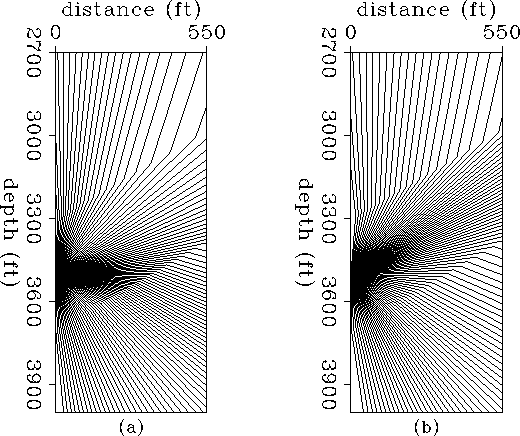 |
Figure 8 Ray paths in the models of Figure 7 for a source located at 3500 ft. (a) Axis of symmetry vertical. (b) Axis of symmetry tilted.
I have reviewed the basic steps to trace rays in layered transversely isotropic models. Special emphasis was made on the calculation of the angle of the transmitted phase as a function of the ray parameter of the incident phase. When the angle of incidence is small, I use a procedure to estimate the angle of the transmitted phase different from when the angle of incidence is large. In the later case the transmitted phase angles are calculated from the roots of a four order polynomial in the tangent of the angle (for P and SV waves) and analytically for SH waves. The appropriate root must reproduce the p of the incident phase for the given wave type, producing a ray in the desired direction.
This algorithm is used in a separate paper (Michelena, 1992) to do anisotropic traveltime tomography in layered media with strong velocity contrasts.
 |